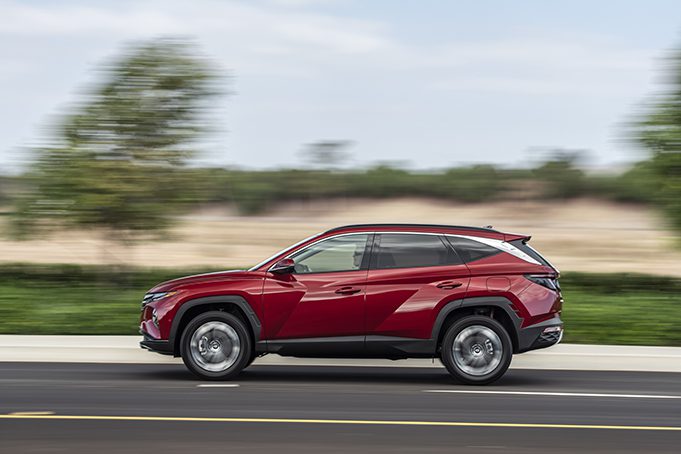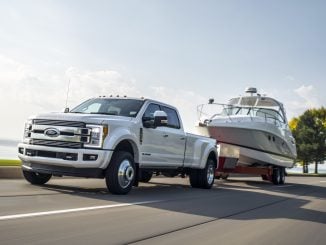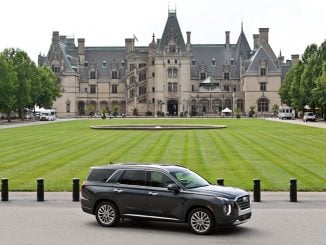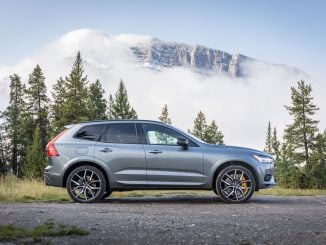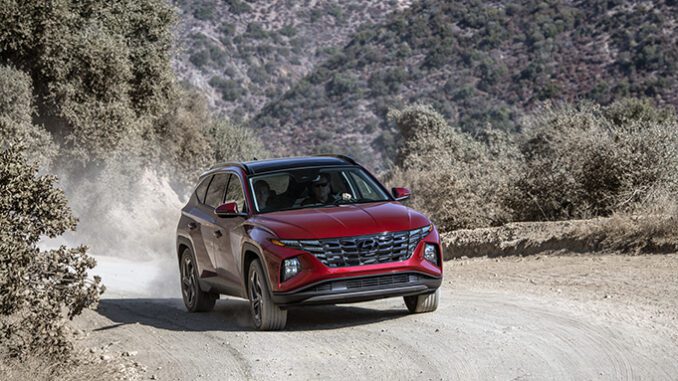
TUCSON, Arizona — Things are finally getting back to normal: I’ve gotten my second Pfizer shot; automakers are slowly beginning to host launch events where dozens of car journalists come together to test a new vehicle; and, most importantly, those journalists can all sit (outside, for now) and eat dinner together and talk shop.
These group conversations bring together carmaker PR reps, engineers, product planners and journalists for informal discussions that simply can’t be replicated over glitchy Zoom calls or email threads. It’s the car journalist equivalent of trying to replicate your twelve-year-old’s science class on a laptop. It’s just not the same.
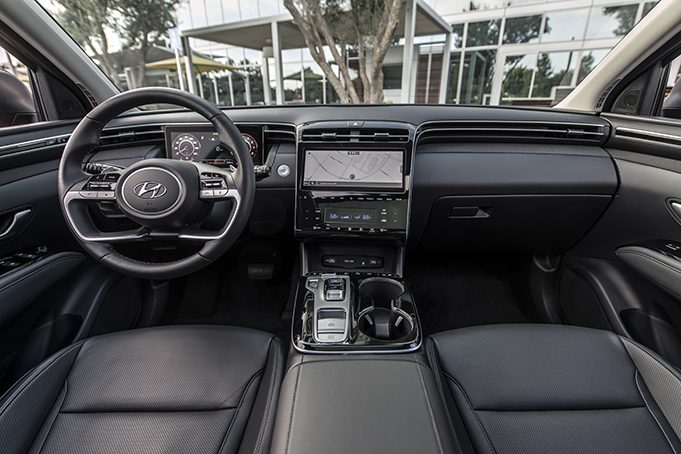 I’d forgotten how important these informal dinners are. Last week, for example, at the launch of the 2022 Hyundai Tucson in Tucson, Arizona — an eye-rolling dad-joke locale choice — I was able to chat for an hour with a Hyundai engineer about the company’s connectivity strategy and its smartphone apps. I learned that the most commonly used feature on the app is remote start and that reducing the amount of time it takes for the car to remotely start after the button is pressed is extraordinarily difficult.
I’d forgotten how important these informal dinners are. Last week, for example, at the launch of the 2022 Hyundai Tucson in Tucson, Arizona — an eye-rolling dad-joke locale choice — I was able to chat for an hour with a Hyundai engineer about the company’s connectivity strategy and its smartphone apps. I learned that the most commonly used feature on the app is remote start and that reducing the amount of time it takes for the car to remotely start after the button is pressed is extraordinarily difficult.
But more important than eating and chatting was driving. We were there to drive the new 2022 Hyundai Tucson, a compact SUV that fights with the Toyota RAV4 and the Honda CR-V in an ultra-competitive segment. And boy, did Hyundai come to play.
The new Tucson is astonishingly good. It’s solidly in the running for the best car in the segment and is easily one of the best vehicles I’ve driven in the past year — at least if you opt for the hybrid.
There are three powertrain variants in the new Tucson, with a fourth on the way. The gasoline-powered front-wheel and all-wheel drive versions should be avoided because the 2.5-liter four-cylinder engine is slow and lethargic. But that’s ok because the hybrid 1.6-liter turbo AWD option is zippy, responsive, more efficient, and better in every possible way.
There’s also a plug-in hybrid version coming later this year that I’m very excited about. Hyundai says it’ll get more than 30 miles on a charge, which will deliver substantial commuter competition to the Toyota RAV4 Prime.
As an added bonus, the hybrid is only $1,150 more than a comparably equipped internal combustion engine Tucson — but it does require you to buy a few extra packages that you should probably opt for anyway.
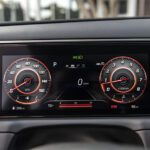 Fuel economy in the higher-level hybrid trims is 37/36/37 city/highway/combined, while it achieves just 24/29/26 with the regular ICE trim. That’s a big difference and helps justify the extra cost quite a bit.
Fuel economy in the higher-level hybrid trims is 37/36/37 city/highway/combined, while it achieves just 24/29/26 with the regular ICE trim. That’s a big difference and helps justify the extra cost quite a bit.
As is typical for Hyundai, the purchase process is straightforward. There’s a simple Good, Better, Best mentality when it comes to trim levels, and they don’t load you up with a million different option packages the way an American brand like Ford or Chevy might.
The sweet spot is in the middle, as is typical. If it were me, I would opt for the SEL Convenience hybrid for $32,835 with destination — though I’d be hard-pressed to not go for the fully-loaded Limited Hybrid.
For another $5,700, you pick up a gorgeous panoramic sunroof over the standard sunroof, fancy tech like ultrasonic parking sensors, rain-sensing wipers, the heavily-advertised “Smart Park” feature, 360-degree camera, ventilated front seats and an upgraded Bose stereo.
One of the Covid concessions was that each journalist got their own test car instead of needing to share, with the added bonus of being able to rock out for the whole drive — ZZ Top shreds in the Tucson.
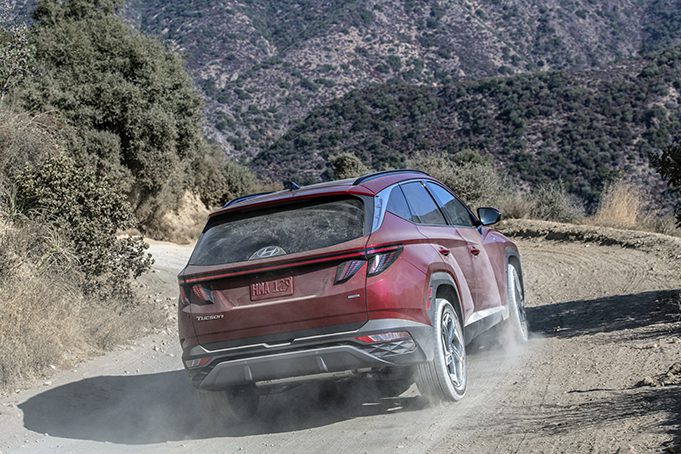 The Limited trim also includes Hyundai’s terrific Highway Driving Assist feature that allows you to momentarily take your hands off the wheel while you’re driving. The car uses forward-facing radar and cameras to determine the vehicle’s position between the lane lines and helps steer. It’s basically Hyundai’s version of Tesla’s Autopilot, and it works incredibly well. The upshot is that your commute significantly less taxing. I’ve used this system in other Hyundai vehicles, including the Palisade and the Sonata, and it’s worth opting for the Limited version of the Tucson just to get it.
The Limited trim also includes Hyundai’s terrific Highway Driving Assist feature that allows you to momentarily take your hands off the wheel while you’re driving. The car uses forward-facing radar and cameras to determine the vehicle’s position between the lane lines and helps steer. It’s basically Hyundai’s version of Tesla’s Autopilot, and it works incredibly well. The upshot is that your commute significantly less taxing. I’ve used this system in other Hyundai vehicles, including the Palisade and the Sonata, and it’s worth opting for the Limited version of the Tucson just to get it.
Hyundai says it wants to “democratize technology” and make trick tech features more accessible at lower price points, and it succeeds in spaces with the Tucson. The amount of tech packed into such a reasonable price is deeply impressive.
And I haven’t even gotten into how great it looks. Squint a little bit, and it seems a bit Lexus RX-ish, which is a tremendous compliment. The interior is pleasingly simple, and the Tucson punches well above its price point.
The new 2022 Hyundai Tucson should be at the top of every compact SUV buyer’s test-drive list.
